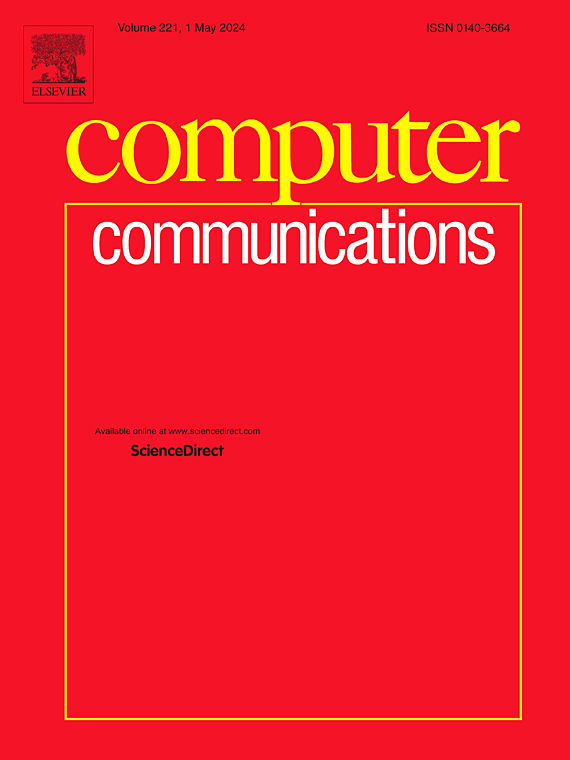GNNetSlice:一种基于gnn的性能模型,支持B5G网络中的网络切片
IF 4.5
3区 计算机科学
Q1 COMPUTER SCIENCE, INFORMATION SYSTEMS
引用次数: 0
摘要
网络切片在第五代(5G)部署和超5G (B5G)设计中越来越受欢迎。简而言之,网络切片将单个物理网络虚拟成多个虚拟网络或片,以便每个片为映射到它的一组流量(源-目的地对)提供所需的网络性能。网络性能由特定的服务质量(QoS)参数(延迟、抖动和损耗)定义,针对不同的用例进行定制,例如制造业、汽车或智能城市。网络控制器决定是否可以在不降低现有片性能的情况下安全地授予新的片请求,因此需要快速准确的模型来有效地将网络资源分配给片。尽管在无线接入网(RAN)中有大量的网络切片建模和资源分配方面的工作,但在核心网和传输网中对网络切片的实现和建模的研究却很少。在本文中,我们提出了GNNetSlice模型,该模型可以预测给定网络切片配置的性能以及核心和传输网络中的流量需求。该模型是利用图神经网络(gnn)构建的,这是一种专门用于处理图结构数据的神经网络。我们选择了数据驱动的方法,而不是传统的建模技术,如排队论或数据包级模拟,因为它们在预测速度和准确性之间取得了平衡。我们详细介绍了用于训练的数据集GNNetSlice的结构,并展示了我们的模型如何准确地预测各种场景的延迟、抖动和损失,分别实现了5.22%、1.95%和2.04%的对称平均百分比误差(SMAPE)。本文章由计算机程序翻译,如有差异,请以英文原文为准。
GNNetSlice: A GNN-based performance model to support network slicing in B5G networks
Network slicing is gaining traction in Fifth Generation (5G) deployments and Beyond 5G (B5G) designs. In a nutshell, network slicing virtualizes a single physical network into multiple virtual networks or slices, so that each slice provides a desired network performance to the set of traffic flows (source–destination pairs) mapped to it. The network performance, defined by specific Quality of Service (QoS) parameters (latency, jitter and losses), is tailored to different use cases, such as manufacturing, automotive or smart cities. A network controller determines whether a new slice request can be safely granted without degrading the performance of existing slices, and therefore fast and accurate models are needed to efficiently allocate network resources to slices. Although there is a large body of work of network slicing modeling and resource allocation in the Radio Access Network (RAN), there are few works that deal with the implementation and modeling of network slicing in the core and transport network.
In this paper, we present GNNetSlice, a model that predicts the performance of a given configuration of network slices and traffic requirements in the core and transport network. The model is built leveraging Graph Neural Networks (GNNs), a kind of Neural Network specifically designed to deal with data structured as graphs. We have chosen a data-driven approach instead of classical modeling techniques, such as Queuing Theory or packet-level simulations due to their balance between prediction speed and accuracy. We detail the structure of GNNetSlice, the dataset used for training, and show how our model can accurately predict the delay, jitter and losses of a wide range of scenarios, achieving a Symmetric Mean Average Percentage Error (SMAPE) of 5.22%, 1.95% and 2.04%, respectively.
求助全文
通过发布文献求助,成功后即可免费获取论文全文。
去求助
来源期刊

Computer Communications
工程技术-电信学
CiteScore
14.10
自引率
5.00%
发文量
397
审稿时长
66 days
期刊介绍:
Computer and Communications networks are key infrastructures of the information society with high socio-economic value as they contribute to the correct operations of many critical services (from healthcare to finance and transportation). Internet is the core of today''s computer-communication infrastructures. This has transformed the Internet, from a robust network for data transfer between computers, to a global, content-rich, communication and information system where contents are increasingly generated by the users, and distributed according to human social relations. Next-generation network technologies, architectures and protocols are therefore required to overcome the limitations of the legacy Internet and add new capabilities and services. The future Internet should be ubiquitous, secure, resilient, and closer to human communication paradigms.
Computer Communications is a peer-reviewed international journal that publishes high-quality scientific articles (both theory and practice) and survey papers covering all aspects of future computer communication networks (on all layers, except the physical layer), with a special attention to the evolution of the Internet architecture, protocols, services, and applications.
 求助内容:
求助内容: 应助结果提醒方式:
应助结果提醒方式:


